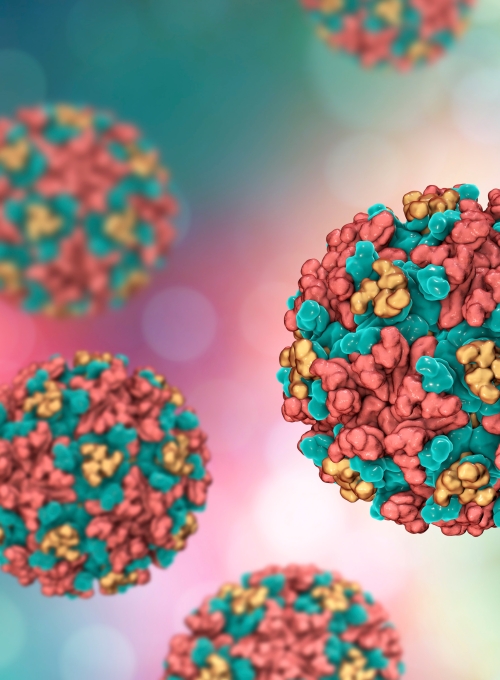
Eastern Equine Encephalitis (EEE)
About
Eastern Equine Encephalitis (EEE) virus, though rare, is one of the most severe mosquito-borne diseases in the United States, with a high mortality rate and potential for long-term neurological effects in survivors. While EEE cases are typically limited to the eastern and Gulf Coast states, climate change and shifting mosquito habitats could potentially expand its range, increasing public health concerns. The significant health impact of EEE infections underscores the importance of robust mosquito control programs, public awareness campaigns, and continued research into more effective prevention and treatment strategies.
Resources
Last updated September 10, 2024
The following resources are intended for health departments, clinicians, and the general public.
Eastern Equine Encephalitis Information
Health Department Response Templates
Overview: The following resources were identified by CORI and aim to support health departments responding to vector borne diseases, including Eastern Equine Encephalitis (EEE) cases. These resources are provided as a general guide and should be tailored to meet the specific requirements and regulations of your local or state health department or relevant authorities. It is crucial that the content and instructions align with current guidelines and legal standards established by your jurisdiction.
Case Investigation Templates
| Document | Purpose |
| Mosquito-borne Illness Case Investigation Form [Ohio Department of Health] | Case investigation form for mosquito-borne illnesses, including EEE
|
Communication Templates
| Document | Purpose |
| Sample Press Release: EEE Confirmation in Horse [New York State Department of Health] | Communicate local detection of EEE in a horse
|
| Sample Press Release: EEE Confirmation in Human [Massachusetts Department of Public Health] | Communicate local detection of EEE in human |
| Sample Press Release: EEE Confirmation in Mosquito [Massachusetts Department of Public Health] | Communicate local detection of EEE in mosquito population |
Health Department Response Plans
Overview: The following guidance materials have been developed by state and local health departments to help communities, providers, and clinic administrators prepare for, recognize, and respond to mosquito borne diseases, including EEE, among others.
Response Plans
| Document | Purpose |
| EEE Response Plan [Connecticut Department of Public Health] | Provides guidance for risk assessment, prevention activities, communication, and community action |
| Arbovirus Surveillance and Response Plan [Vermont Department of Public Health] | Example response plan that outlines arbovirus education, surveillance, and guidance for state response to EEE and other vector-borne diseases |
Clinical Guidance and Educational Materials
Overview: The following guidance and educational materials have been developed by health departments to support providers and clinic administrators' response to vector-borne diseases.
Guidance Documents
| Document | Purpose |
| Arbovirus Panel: Encephalitis Viruses [Connecticut Department of Public Health] | Provide laboratory guidance for testing for encephalitis viruses |
Key Information for the General Public
Infographics
- Mosquito Alert (Vermont Department of Health]
Factsheets
- EEE Fact Sheet [Massachusetts Department of Public Health]
- EEE Fact Sheet [New York State Department of Health]
Key Publications
Outbreak lessons learned
- Four Human Cases of Eastern Equine Encephalitis in Connecticut, USA, during a Larger Regional Outbreak, 2019
- Eastern Equine Encephalitis Surveillance and Response, Rhode Island, 2019
- Ecology and Epidemiology of Eastern Equine Encephalitis Virus in the Northeastern United States: A Historical Perspective
